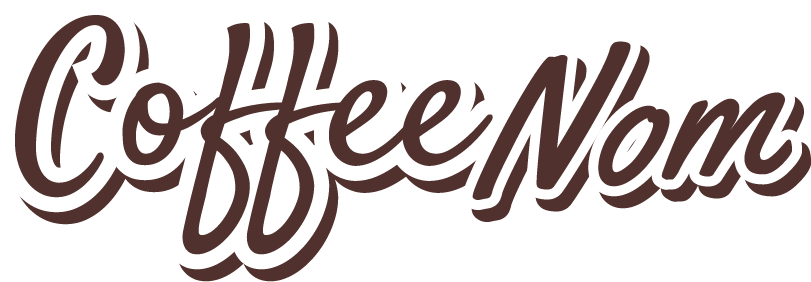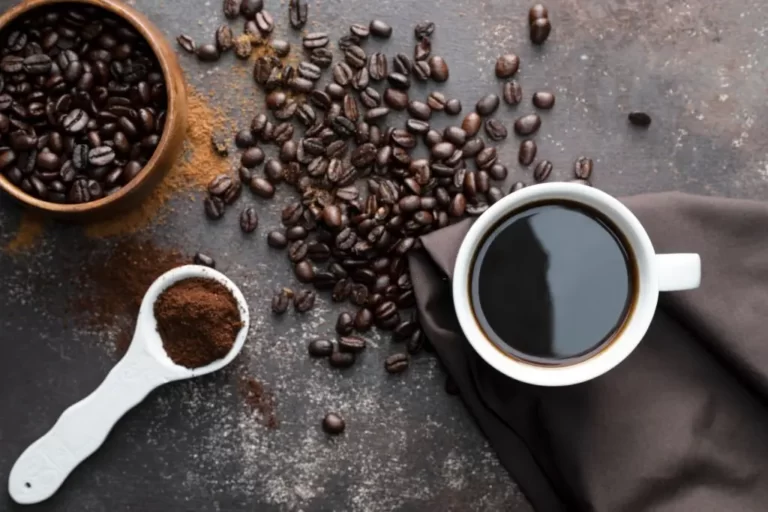Espresso is the most go-to brewing method among coffee lovers. Everyone loves the concentrated coffee punch that comes with a single or double espresso shot. Picking espresso coffee beans can be tough sometimes. Well, It jumpstarts your morning the moment it kicks into your system.

But, to get the perfect espresso, you need the ideal coffee beans to get the best out of your morning cup. We’ll be providing a few helpful tips for picking espresso beans, so you can start your day with a nice caffeine punch.
What Are Espresso Beans, Exactly?
The name might suggest some unique classified beans with the codename “espresso beans.” But in reality, they are just regular coffee beans. Then why the mystery?
Espresso is just a coffee brewing method and the final product that you sip from your cup. All you need is an espresso coffee machine and any type of roasted, freshest coffee beans to make it work.
But the ones labeled “espresso blend/beans” are beans that have been prepared by coffee roasters, especially for making espresso, and sometimes they taste plain and horrible.
Traditionally, espresso beans are roasted really, really dark by coffee bean roasters. It leads to an unpleasant flavor. Since people have always believed that harsh bitterness is the price of better coffee, they never complained. But it doesn’t have to be that way.
Espresso is not all about bitterness. A cup of espresso can be rich with fruity flavors and floral aromas, with pleasant acidity and hints of pine.
What’s Unique About Espresso Beans? (Tips For Picking Espresso Coffee Beans)
Now you may ask, “If I can use regular beans for espresso, why can’t I use regular coffee beans?” You can, but a few factors make the dedicated espresso beans more crucial for the coffee-making process. Here are the 3 main reasons:
Tradition
Espresso blends have a darker roast than usual coffee that delivers the kick that makes an espresso “the energizing drink people know and love. But, of course, that’s what everyone expects, so dedicated espresso beans are the way to go.
Better With Milk
Espresso drinks are the best combo element in any milk-based coffee beverage, such as a cappuccino or a latte. The dark roast coffee beans cut through that milky sweetness and give you that authentic flavor.
It’s Cheaper
If you’re a cafe owner, an espresso blend is a way to cut your expenses. As you know, single-origin coffee is costly, and an espresso blend that has 20% robusta mixed in costs around 20% cheaper.
Characteristics Of A Perfect Espresso (Tips For Picking Espresso Coffee Beans)
The Look
The top of the espresso cup has a nice, fluffy brown foam sitting on top of it, which is called crema. The crema in a cup of espresso enhances the overall taste.
The Taste
I can’t describe the exact taste, but it’s something that you have to feel for yourself when you take the first sip. But many don’t feel the real taste since they find it too bitter or intense or try to chug the whole thing at once.

If I had to put espresso flavor in words, it’s like an enhanced version of an excellent drip coffee cup. You know how drip coffee smells, right? Take that smell, guess the flavor, then multiply it by two or three if you’re feeling generous. That’s espresso for you.
Like all the coffee in the world, espresso also has bitterness in it, but you get used to it pretty fast. And when you do, your palate starts to detect the flavors hidden behind that wall of bitterness. But yes, if your espresso is a bad shot, it can be exceptionally bitter.
Espresso contains floral notes with hints of fruit and caramel and brighter acidity.
The Aroma
The proper espresso will always fill up the room with its aroma. It’s like coffee, but more intense than usual. The brewing method ensures the aroma of your coffee isn’t lost.
Espresso brewing makes sure that the coffee oils are introduced to the final cup, and it retains all the authentic aroma of a true espresso.
Smelling the espresso right after brewing it and pouring it in a cup is a usual coffee lover thing to do. But if it doesn’t smell right, it’s either the beans or something wrong with your brewing process.
Having fun Nomies? Check out our piece on coffee making tips.
Things To Consider When Picking Espresso Beans (Tips For Picking Espresso Coffee Beans)
If you still wish to stick to regular beans, you will need to consider a few things when picking your beans for espresso. Let’s take a look at them, so you don’t end up with a bad cup of coffee.
Is Arabica or Robusta Best for Espresso?
Coffee fruit is the most diverse one out there, and it’s okay for you to sway between your choices (even though you have only two). It’s like choosing apples for baking apple pies.
Certain apples will bake you a sweeter pie, but how the chemicals in the apple are, affects the taste of the pie itself. Coffee is the same way- each different brew will taste different.
Pro Tip: Love a coffee at a local coffee shop? Ask the barista where it’s from. They’ll happily help you figure out what kinds of coffee you like.
Since your choice is either Arabica or Robusta, the debate can get quite complicated.
Though many people will answer Arabica right away, Robusta is a better choice for espresso for its robust flavor. Though it can be quite a hassle to find proper quality robusta unless you happen to know a dealer or two. You won’t find good, fresh roasted robusta beans in the local supermarket.

You want fresh beans for that sweet crema on top of your cup. Freshly roasted beans always provide the most excellent crema on top of your cup.
If you consider the natural aspect, Robusta is less sweet and acidic, which tastes less sweet and more bitter. But if you take the higher caffeine and crema into account, the positive outweighs the negative.
Moreover, espresso is so concentrated that you won’t need the acidity, so you can play with the traditional coffee rules if you like. This is the reason why a single-origin robusta makes for a great single-origin espresso.
Avoid coffee beans that are labeled 100% Coffee.
Though they say “100% coffee” on the label, they aren’t always honest.

The amount of caffeine on the coffee beans depends on the trees they are produced from, and the manufacturer can’t change it. So what this label exactly means is that the beans inside the package contain the most caffeine they possibly could through the packaging process.
So if you want to get the best out of your espresso, paying attention to this teensy-weensy little detail makes you not only a genius but a coffee snob. And you love being both, don’t you?
Aren’t You Forgetting An Important Date? (Tips For Picking Espresso Coffee Beans)
If I’m reminding you about your special one’s birthday, then you should really go out with them today for the party. But, if that’s not the case, you should never forget to check the date of the coffee you’re buying, cause that’s just as important.
When buying coffee, you should look up the roasting date to ensure you’re getting your hands on fresh coffee beans that can provide the fine crema you love.
Without the crema, your espresso will just taste like a regular strong black coffee. If the coffee has aged a bit, it will not produce the crema since the carbon dioxide has been released from the beans.
What’s The Right Caffeine Level?
Here’s simple science: the shorter time you roast coffee beans, the more caffeine your coffee has. So, when choosing coffee levels, disregard the caffeine amount, and select a type of roast that’s most appropriate to your choosing.
If you’re choosing espresso beans for your cafe, a lightly roasted coffee bean should be your choice if your customer choice is a smooth taste and varying acidity. But if your customer is looking for a bolder flavor, serve them a darker roasted coffee.
Which Roasting Style Should You Go For?
Darker roasts are the way to go, as we mentioned earlier. Then, go for blended coffee of the espresso variety or espresso beans written on the label when buying. This indicates that this blend was created especially for espresso.
Another reason is that a darker roast always tastes more consistent. Of course, you can always add a little sugar or milk, or other additives to spice it up.
Do You Prefer Adventurous Flavor or Consistency?
Some want their espresso the same amount of “good” every day. But others like to venture into newer, more creative tasting territories.
Now let me ask you this: Are you a creature of habit, or do you like more adventure in your life?

If your answer leans towards the latter, I suggest picking up different beans than dedicated espresso beans and experimenting with your brews.
Every day, small batches of brew with different beans and grinds should do the trick.
Are You Picking a Roaster That Shares Your Values? (Tips For Picking Espresso Coffee Beans)
Here’s where we venture to the welfare side of coffee. As much as we appreciate coffee, we also appreciate the people who work so hard to make sure the coffee reaches our cup.
Are the farmers and the workers well-compensated? Are the beans well stored, shipped, and maintained for maximum freshness? Do the manufacturers care enough for the coffee enough to ensure freshness?
These feed your conscience, as well as your craving.
Is Your Coffee Single-Origin?
If you’re a coffee snob, you know how vital single-origin coffee is for you when making espresso, or any coffee, for that matter.
Single-origin coffee beans let you detect every characteristic provided by the point of origin. And this is why many coffee aficionados lean towards single-origin espresso roasts. This ensures the coffee isn’t blended and produces a decent shot of espresso taste.
Are You Considering The Right Blend?
If you are going for a blend to brew your espresso, you need to consider whether you want to make straight-up espresso or other espresso-based drinks.
If your answer is a regular daily shot of espresso, you need to avoid anything Robusta in the blend since dark roasted Robusta will make the final cup too bitter to swallow.
However, go for robusta blends for milk-based drinks or even darker blends. You can taste the extra notes of roast even through the milk.
What’s The Right Grind Size For Espresso Beans?
- Authentic espresso (single wall basket): If you’re grinding for authentic espresso, you need to make sure your grind is fine enough. A coarse grind turns your espresso into a “weak-presso,” and you don’t wanna go there.
- Pressurized (double-wall basket): Well, this counts as kinda cheating when making espresso, but if you still wanna go through it, you don’t need the perfect grind size like a single basket here. You can use pre-ground coffee for this method, and a coffee grinder is optional.
What Type Of Coffee Maker/Brewer Are You Using?
Even when choosing high-quality beans, the machines you will be using to brew said beans can influence your coffee cup.
If you’re making espresso with a french press, any medium to dark roast should do
If you’re planning to go the cold-brew route, you can work with light roasted and single-origin beans.
If you’re a pour-over coffee lover, then you don’t have to stress about adding steamed milk. Any single origin bean with high flavor notes can get you started.
Had fun reading? You’ll love to read our piece on common coffee making mistakes to avoid.
Bottom Line
A cup of fine espresso can either kickstart your day or upset you enough into going back to the kitchen and making another cup while ruining your day.
In either case, all the espresso lovers, including you, need to make sure you have the best kind of bean you can get at the moment.
FAQs
When grinding beans for espresso, you should consider a finer grind that has powder consistency.
“Espresso beans” are darker roasted than usual beans you can find on the market. When preparing, the coffee bean roaster exclusively focuses on the quality of a cup of espresso and roasts the beans accordingly. As a result, the dark roast beans bring out the best of the espresso flavor.
You need to purchase a bag of beans in a time between the roasting time and 3 weeks past.
It depends on the type of espresso you want to drink. If you are going for straight espresso, you need to choose lightly roasted arabica beans. However, if you are brewing your espresso as a base for other espresso-based drinks, robusta blends/ grounds are your best option.
With a fine grind, the water pressure of the espresso machine can ensure that the grounds are pressured correctly, making the most out of the espresso. The ground density of the beans in the filter is more consistent if the beans are finely ground.
Since espresso is a more concentrated shot of coffee that tastes bitter and sometimes a little bitter, darker roasted beans are more suitable for espresso brewing.

